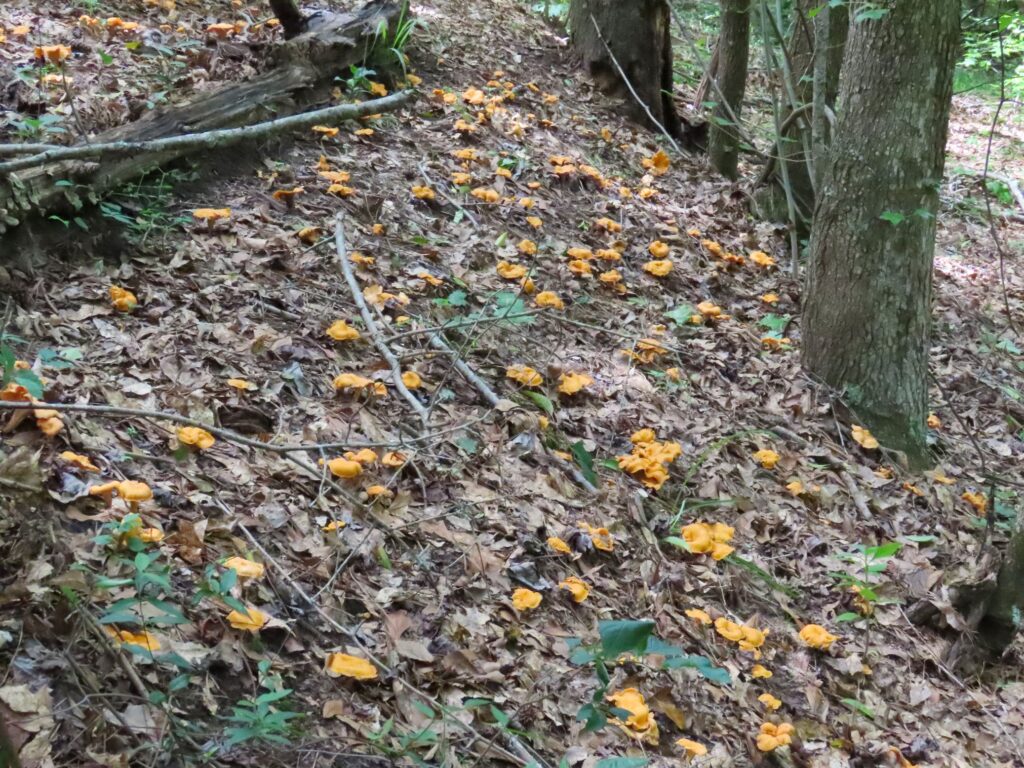




This week for Flora and Fauna Friday we have one of our most widespread and easily identifiable edible mushrooms, the Chanterelles (Cantharellus spp.).
Here in the Lowcountry we have two common species of Chanterelle, the Red Chanterelle (C. cinnabarinus) and the Smooth Chanterelle (C. lateritius) and about a half-dozen more uncommon species around the state, to include the Golden Chanterelle (C. cibarius). Chanterelles in general are yellow and orange in color, have a funnel shape with irregular, wavy margins when mature, a smooth, but not shiny, upper surface, and fleshy vein-like false-gills underneath. The Red Chanterelle is a deep orange-red in color with deep false-gills and a fairly delicate shape. The Smooth Chanterelle has a pale to rich yolk-yellow color and distinctly shallow false-gills, which slowly melt away as the cap transitions into the stalk. It has a fairly robust build and can grow a palm-sized cap, often with a highly irregular, wavy margin.
Chanterelles fruit in summer, usually peaking in August and September on Edisto Island, but the annual timing can vary based on that year’s weather. Smooth Chanterelle is by far the most common species you’ll find on Edisto Island and around the Lowcountry. I often find Smooth Chanterelles growing beneath Live Oaks in open forests and old lawns. Chanterelles are mycorrhizal fungi. This means that they survive by forming a mutualistic relationship with plants and by breaking down decaying organic matter in the soil. The plant feeds the fungus sugars and in exchange the fungus supplies the plant with nutrients it extracts from the soil. Chanterelles mainly associate with oak trees, and some other hardwood species, and breakdown decaying plant matter to extract the mineral nutrients those oak trees crave. This means you’ll never find Chanterelle mushrooms emerging out of a log or stump or springing up out in an open field with no trees around. You’ll only ever find them beneath, or nearby, hardwood trees. It’s also why Chanterelles, Morels, and Truffles are not practical to cultivate commercially, unlike the common culinary staples of Portobello, Shiitake, and Oyster mushrooms that are saprophytic and only need rotting wood to survive, rather than a whole tree to feed them.
All members of the Chanterelle genus are edible and are a highly sought after seasonal delicacy by folks who like foraging in the forest. The Golden and Red Chanterelles are considered the most flavorful of our local species, with the Smooth being similar in taste but less flavorful. However, there is a toxic imposter, the False Chanterelle (Hygrophoropsis aurantiaca), that lurks within its range. Although not deadly, you don’t want to eat it. It is pretty easy to pick out from our locally common Red and Smooth Chanterelles, given that it is neither red nor smooth, and it is also a saprophyte, often sprouting from rotten logs, but it does look very similar to other common species of Chanterelle found across the country. So if you’re thinking about foraging for fungi, please consult a reputable field guide before you start picking mushrooms.